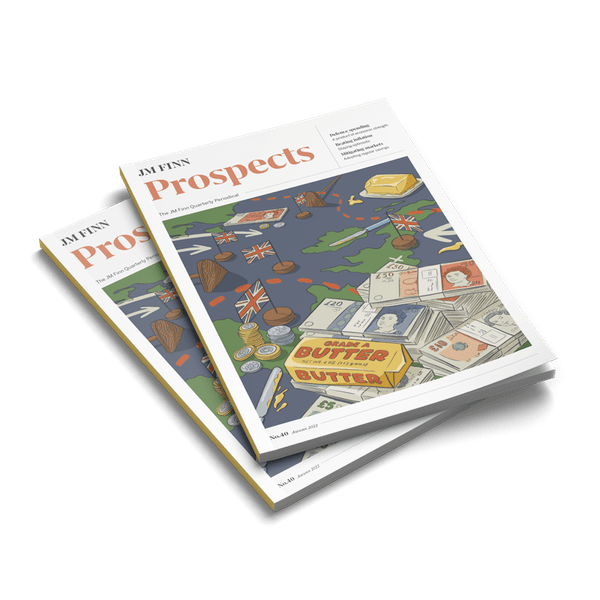Pick your risk …. pandemic, lockdown, recession, supply chain crisis, war in Europe, energy crisis, inflation, cost of living crisis…. we have had all the above and more impacting markets since December 2019; quite a test for a strategy looking to generate absolute returns and to be “uncorrelated” to markets and have low volatility.
To assist us in navigating these challenges, we have developed some proprietary tools, with UK Thermostat model at the core. We start by looking at long-lead indicators such as liquidity and money supply, to get an insight into where the overall economy is headed. We then look at specific drivers: the labour market, housing, consumers, and businesses, by analysing coincident and leading indicators, surveys, proprietary models, and alternative data. Unfortunately, the UK and Global outlooks are still grim and show little signs of improvements. It’s safe to say that the “temperature” of our Thermostat – unlike the weather – is quite cold.
Market neutral means being able to perform in all market conditions.
Against this backdrop how do we aim to generate absolute returns? When starting out, we designed a fundamental stock-picking product that we thought could be genuinely market neutral. This doesn’t mean ‘zero net cash’ or contorting the portfolio into an arrangement of stocks to arithmetically produce a zero ‘beta’ (the sensitivity to the stock market). It means being able to perform in all market conditions: up, down and sideways markets and importantly protecting capital during equity market ‘rotations’, where headline index levels are not necessarily volatile, but sectors and other stock groupings can disperse wildly.
Outlooks are still grim and show little sign of improvements. It’s safe to say that the temperature is quite cold.
With so many macro risks around that it is seemingly impossible to predict, the key is to focus on the risk that we do want to take – which in our case is stock-picking. We are big believers in active stock selection and having a real fundamental knowledge of the stocks in the UK Mid & Large Cap universe in which we invest. We need to find longs and shorts, i.e. buys and sells, that are ‘loose pairs’. This means they are unlikely to be perfect pairs in the same sub-sector – this is not possible in a relatively small equity market like the UK – but we make sure that all of our stock ‘clusters’, whether it’s Travel, RMI (renovation, maintenance and improvement), Banking or Growth TMT (technology, media and telecoms) etc have no significant net exposure. This relies on our judgement of whether the market views certain stocks as being in the same ‘category’ – we think this is a good, common-sense starting point.
We then need to make sure that the portfolio does not have any significant exposure to any of these large macro risks and factors that are so dominant in the market. The obvious ones being ‘market direction’, ‘value/quality’, ‘cyclical/defensive’ and we would also add the ‘domestic’ factor. But it’s also important to check in on thematic risks like ‘oil price sensitivity’ or ‘lockdown/re-opening’ when appropriate. In doing this we need to be totally objective – we use regressions on all stocks in the universe to determine the key ‘factors’ driving the share prices. When we aggregate these scores up to our portfolio, we can make sure our fund is not particularly biased to any one factor, insulating our investors from macro risks and these ‘rotations’ we mentioned.
The proof of the pudding, in terms of a strategy that claims to be neutral or ‘all-weather’, can only be in the eating. Whilst there is much further to go for us in terms of proving the model, we are happy with how the fund has handled some very left-field events, to put it mildly, over the past two and half years. We’ve been forced to rule nothing out in future – and the best way to approach this is to magnify the portfolio towards risks we actually want to take and not those we don’t. For us – that will always be the stock-picking, not the macro.
Tellworth Investments LLP (“Tellworth”) is a UK equity investment management boutique which launched with BennBridge Ltd (“BennBridge”), based at Eagle House, 108-110 Jermyn Street, London SW1Y 6EE. BennBridge is a limited company registered in England with registered number 10480050. The registered office is Windsor House, Station Court, Station Road, Great Shelford, Cambridge CB22 5NE. BennBridge is authorised and regulated by the Financial Conduct Authority (FRN: 769109). Tellworth provides investment services through BennBridge.
BennBridge provides this material as a general overview of the firm, our processes and our investment capabilities. It has been provided for informational purposes only. It does not constitute or form part of any offer to issue or sell, or any solicitation of any offer to subscribe or to purchase, shares, units or other interests in investments that may be referred to herein and must not be construed as investment or financial product advice. BennBridge has not considered any reader's financial situation, objective or needs in providing the relevant information and is not intended for distribution to or use by any person or entity in any jurisdiction or country where such distribution or use would be contrary to local laws or regulations.
John Warren
Fund Manager at Tellworth Investments
Illustration by Emily Nault




